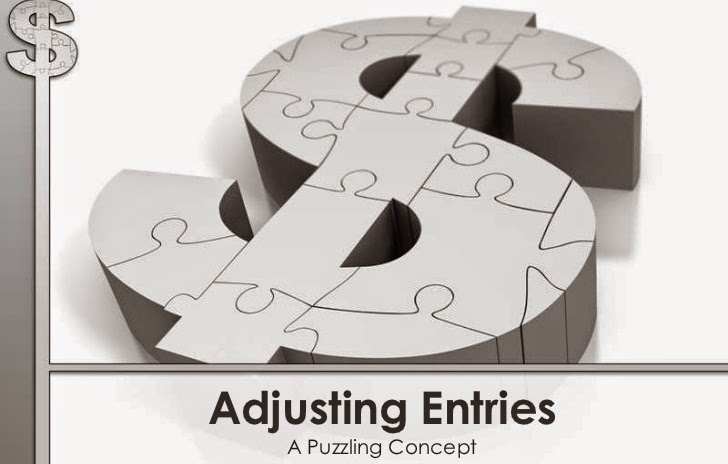What are Accounting Adjusting Entries
Adjusting Entries are journal entries that are made at the end of the accounting period, to adjust expenses and revenues to the accounting period where they actually occurred.Generally speaking, they are adjustments based on reality, not on a source document. This is in sharp contrast to entries during the accounting period (such as utility bills or fees for services rendered) that depend on source documents.
Preparing adjusting entries is a key step in the ongoing accounting cycle, coming right after you’ve completed preparing a trial balance.
Adjusting Entries Types:
There are five basic types of adjusting entries:
1.Accrued revenues:
It is also called accrued assets, already earned but not yet paid or recorded.
2.Unearned revenues:
It is also called deferred revenues, received in cash and recorded as liabilities prior to being earned.
3.Accrued expenses:
It is also called accrued liabilities, already incurred but not yet paid or recorded.
4.Prepaid expenses:
It is also deferred expenses, paid in cash and recorded as assets prior to being used.
Other adjusting entries include depreciation of fixed assets, allowances for bad debts, and inventory adjustments.
Examples of Adjusting Entries.
By their nature, all adjusting entries will involve a pairing of either an asset or liability account with a revenue or expense account. Here are some typical examples of adjusting entries of each type mentioned above:
Accrued revenues — Say your company provided Rs.1,800 worth of consulting services to the Bogus Manufacturing Company over the past month, and today is the end of the accounting period. The consulting hours will be billed and collected next month, well past when you’ll be preparing a trial balance, financial statements, closing entries, etc. In this case, you need an adjusting entry to account for the unbilled services:
Adjusting Entries Debits Credits
Accounts Receivable 1,800.00
Consulting Fees Earned 1,800.00
Unearned revenues — Bilal Manufacturing Company purchased an annual service contract from you for Rs.30,000, which they paid up front. If only three months of their contract are within this accounting period, then that means nine months of the contract’s revenues are unearned. In order to properly reflect reality, you need an adjusting entry:
Adjusting Entries Debits Credits
Unearned Revenue 22,500.00
Revenue 22,500.00
Accrued expenses — If you pay weekly salaries and the accounting period ends mid-week, you have accrued salary expenses that you haven’t yet paid. You’ll need an adjusting entry to reflect the as-yet unpaid salaries:
Adjustment: Debits Credits
Salary Expense 7,200.40
Wages and Salaries Payable 7,240.40
Prepaid expenses — Let’s say you paid Rs.3,000 for your property insurance six months ago, and you still have six paid months remaining on the policy after this accounting period. To accurately reflect the value and expense of the remaining policy, you need an adjusting entry:
Adjustment: Debits Credits
Property & Casualty Expense 1,500.00
Prepaid Insurance 1,500.00
Other adjusting entries — Your company purchased 1 million of manufacturing equipment two years ago, and according to your depreciation schedule it has depreciated by 350,500 this accounting period. To ensure that your balance sheet doesn’t overstate the equipment’s value, you need an adjusting entry:
Adjustment Debits Credits
Depreciation Expense 350,500.00
Accumulated Depreciation – Equipment 350,500.00

